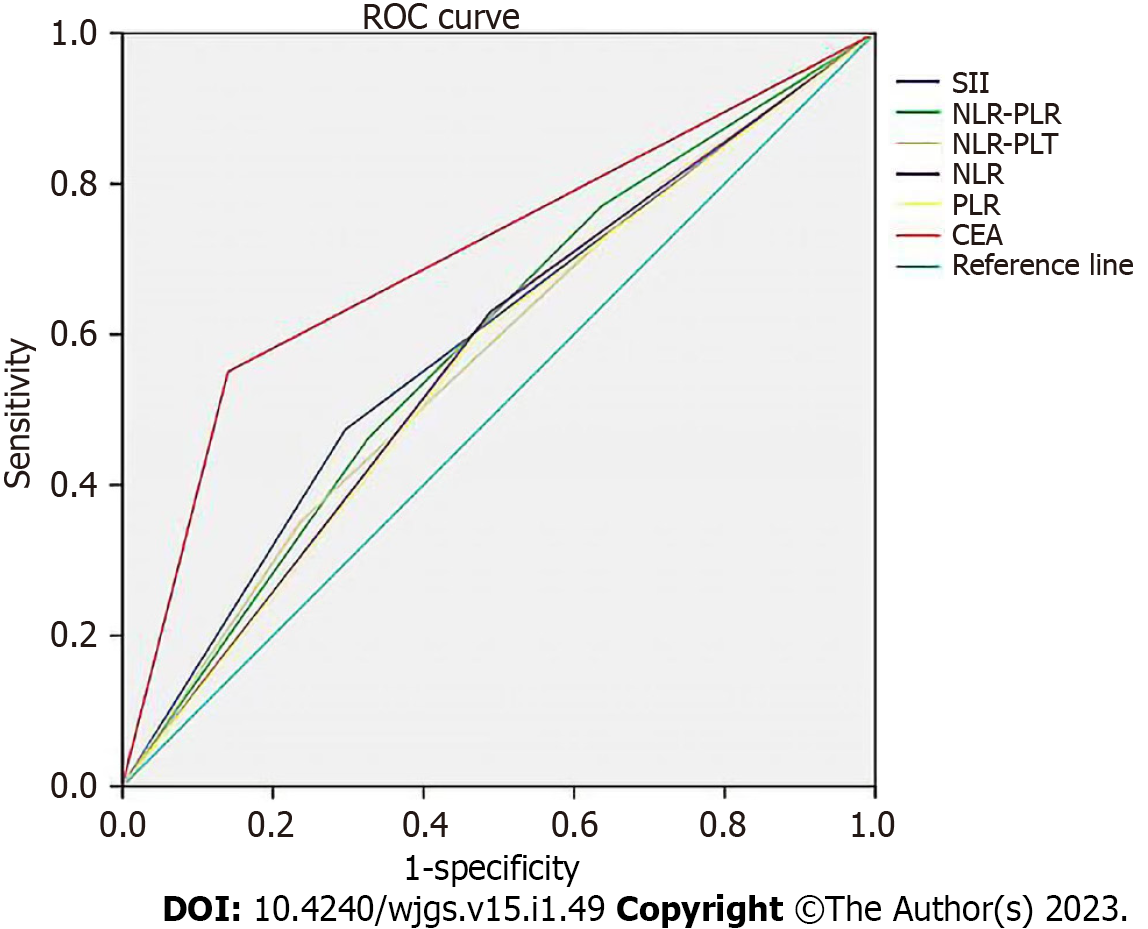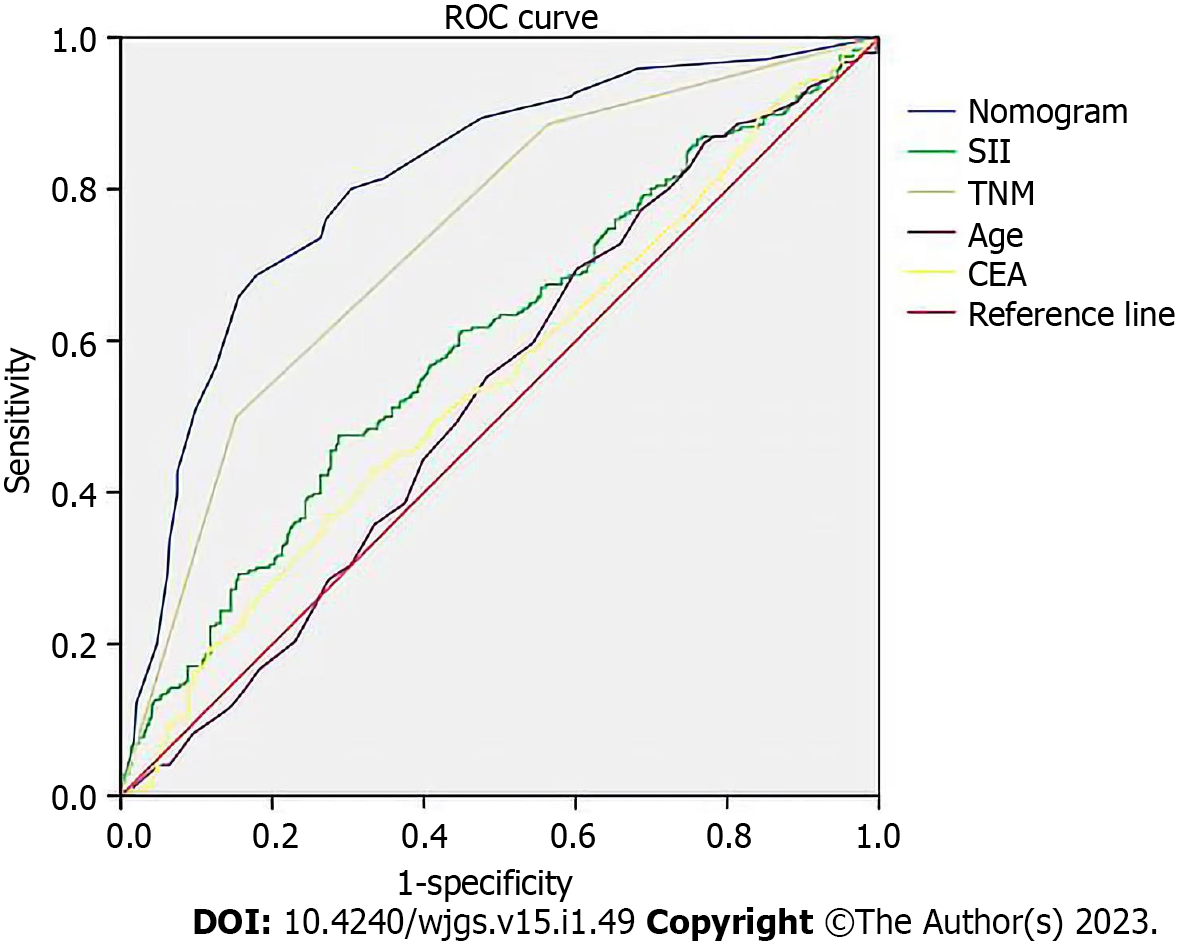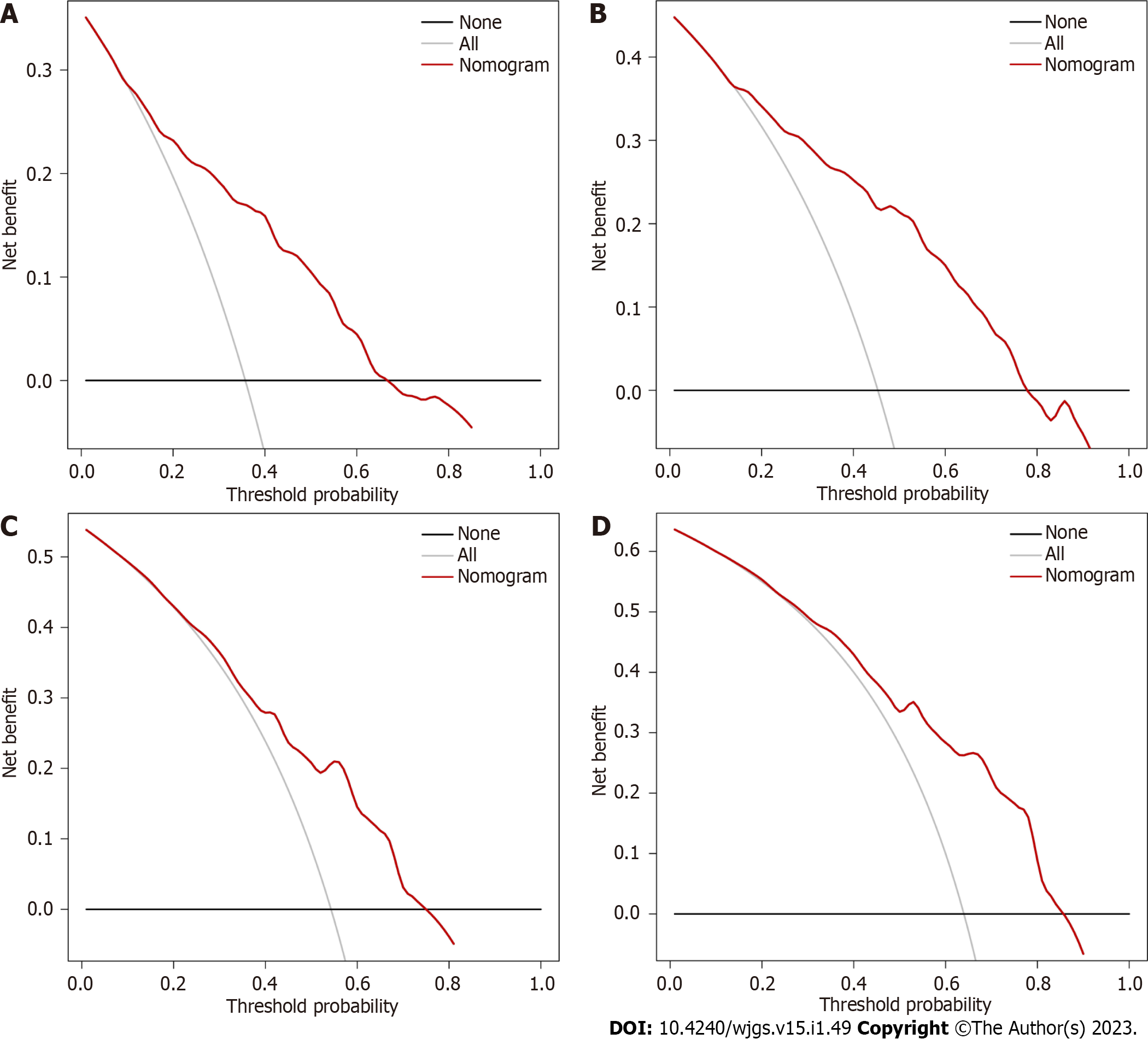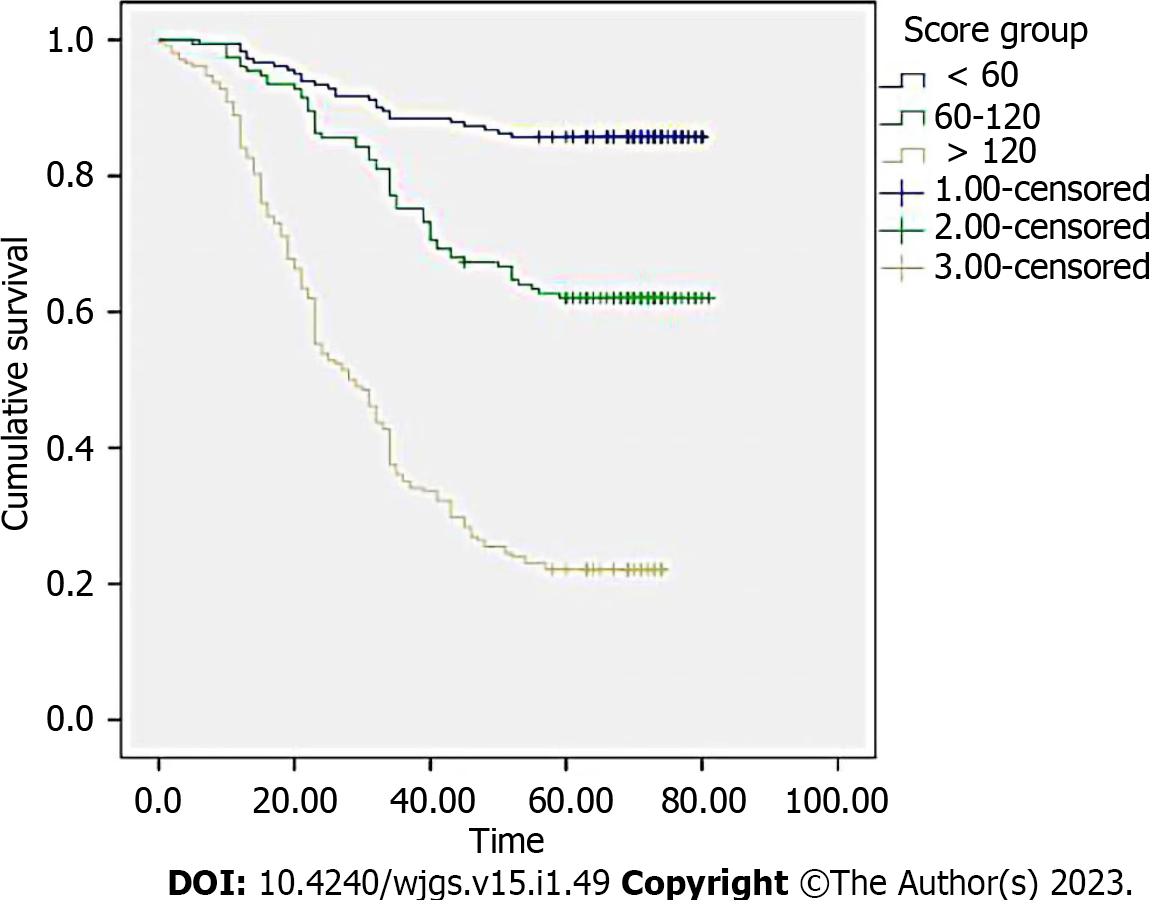Copyright
©The Author(s) 2023.
World J Gastrointest Surg. Jan 27, 2023; 15(1): 49-59
Published online Jan 27, 2023. doi: 10.4240/wjgs.v15.i1.49
Published online Jan 27, 2023. doi: 10.4240/wjgs.v15.i1.49
Figure 1 The receiver operator characteristic curve of the blood markers.
CEA: Carcinoembryonic antigen; NLR: Neutrophil-to-lymphocyte ratio; PLR: Platelet-to-lymphocyte ratio; PLT: Platelet; ROC: Receiver operator characteristic; SII: Systemic immune-inflammation index.
Figure 2 Nomogram for predicting overall survival after curative resection of gastric cancer.
CEA: Carcinoembryonic antigen; OS: Overall survival; SII: Systemic immune-inflammation index; TNM: Tumor node metastasis.
Figure 3 Calibration curves.
A: The prognostic nomogram for 3-year overall survival (OS) the training set; B: The prognostic nomogram for 5-year OS in the training set; C: The prognostic nomogram for 3-year OS in the validation set; D: The prognostic nomogram for 5-year OS in the validation set. OS: Overall survival.
Figure 4 The receiver operating characteristic curve of the prognostic nomogram in the training set.
CEA: Carcinoembryonic antigen; SII: Systemic immune-inflammation index; TNM: Tumor node metastasis; ROC: Receiver operator characteristic.
Figure 5 Decision curve analysis.
A: The decision curve analysis of the prognostic nomogram for predicting 3-year overall survival in the training set; B: The decision curve analysis of the prognostic nomogram for 5-year overall survival in the training set; C: The decision curve analysis of the prognostic nomogram for 3-year overall survival in the validation set; D: The decision curve analysis of the prognostic nomogram for 5-year overall survival in the validation set.
Figure 6 Survival curves stratified by the score calculated by the nomogram in the training cohort (low risk: < 60; intermediate risk: 60–120; and high risk: > 120).
- Citation: Luo PQ, Song ED, Liu F, Rankine AN, Zhang LX, Wei ZJ, Han WX, Xu AM. Development and validation of a novel nomogram for predicting overall survival in gastric cancer based on inflammatory markers. World J Gastrointest Surg 2023; 15(1): 49-59
- URL: https://www.wjgnet.com/1948-9366/full/v15/i1/49.htm
- DOI: https://dx.doi.org/10.4240/wjgs.v15.i1.49














